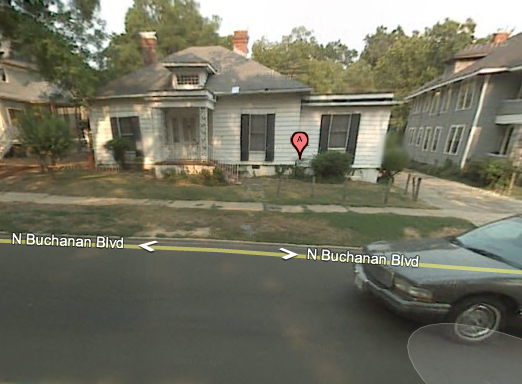House Where Duke Lacrosse Players Did Not Rape Woman Destroyed
by Nate Freeman

It was just a white split-level a stone’s throw from dorms on Duke University’s East Campus, indistinct from the other worn-down frat pads littered throughout Durham. It had an iron-wrought railing that curved into leafy shapes, and behind that was a door with a metal knocker. The shutters were black and the roof was grey. But what set it apart was its address-a street number that conjured up a remembrance of the salacious accusations, the media frenzy and the turbulent bouts of protest. Today 610 N. Buchanan Road-the center of the Duke Lacrosse scandal that erupted in March 2006-was destroyed.
I matriculated to Duke as a part of the class of 2010. As a group, we decided on this university despite what can only be called turmoil on campus: protests by the New Black Panther Party on the main quad, an ad taken out in the campus paper by a group of professors proclaiming a “social disaster” on campus, and flashy cover stories in Rolling Stone and Newsweek that referred to Blue Devil-specific phenomena such as the “lacrosstitute” and the “Duke 500.” Three players on Duke’s lacrosse team had been accused of rape by exotic dancer Crystal Mangum, and this rape had supposedly occurred at a house steps from where we would spend our freshman year.
As the year went on, the truth about that night started to trickle out. The contradictory accounts shifted as the investigation continued, eventually resulting in the exoneration of the players and also ethics charges levied against District Attorney Mike Nifong. I had the opportunity to attend one of these ethics hearings as a reporter for the Duke Chronicle. I sat next to Reade Seligmann, one of the three players, along with Collin Finnerty and David Evans, accused. Seligmann was there with his lawyer and family members, watching the charges of false accusation get thrown at the embattled district attorney. I even ran into Nifong himself, first in the bathroom-where he took to washing his hands with an astounding vigor-and then after the day’s hearing, when I asked him a question for the paper (he declined to comment.)
But throughout these events the house stayed constant, languishing in vacancy. The University had purchased it just a month before the incident occurred, and had no choice but to leave it alone in case it became of use as evidence in the ongoing civil cases. So it stayed unoccupied and drab, photographed until it became iconic, its sides often dotted with exclamatory signs, its lawn attractive to protesters, gawked at by those who ambled by on their way to town.
In its last days the house was a relic. It’s been years since North Carolina Attorney General Roy Cooper dismissed all charges against the three players. There have been civil suits filed against the university by players, Nifong was disbarred and briefly imprisoned for his mishandling of the case, and Duke has for the most part shed its automatic associations with the incident. Instead of potential rapists, the members of the Duke lacrosse team are national champions, having beaten Notre Dame in this year’s N.C.A.A. final on May 31. Many of the players who led the charge for the Blue Devils were fifth-year seniors-freshmen when the scandal broke-who were granted eligibility by the N.C.A.A. because the 2006 season was canceled. The victory did much to break down the perception that still lingers in discussions of Duke lacrosse, and now that the University decided to raze the house at 610, the last symbol of the incident is gone from the Bull City. It will, at least, no longer gnaw at the administration as a constant reminder.
The act of destruction itself was appropriately anticlimactic. A friend of mine-a member of my class spending the summer in Durham-happened to pass the carnage while going on a run around campus, and didn’t take more than a glance until he recognized the house’s frame as the one printed in newspapers all over the country. “Well, to be honest, it just looked like any old house getting knocked down,” he wrote me on gchat. “It took a couple seconds for it to dawn on me what house it was. I just thought, ‘Oh yeah, that was the lacrosse house,’ and that was it.”
That’s the way many Duke grads my year would react. We arrived too late for the firestorm, and instead experienced the recession of ire that emerged after the innocence became clear, series of apologies and the eventual fallout and rebuilding of the Duke brand. It affected us in a way that extended little beyond the world of small-talk; for those months, when we told people we were going to Duke, we would get shit from kids our age and disapproving tut-tuts from mothers. To many of us, the entire case is now a memory of these exchanges-nothing more than awkward moments, occurrences that, as high schoolers, we were all too accustomed to-and the house’s demise makes these exchanges even more distant.
And it was just a house. Maybe when walking by I indulged for a second in curiosity, pictured the rooms beyond those walls, and tried to imagine what really happened that night of March 13. But when the wrecking crew came today the house was already a specter-it was already barely there, already more a memory than a place. It had been empty for so long.
